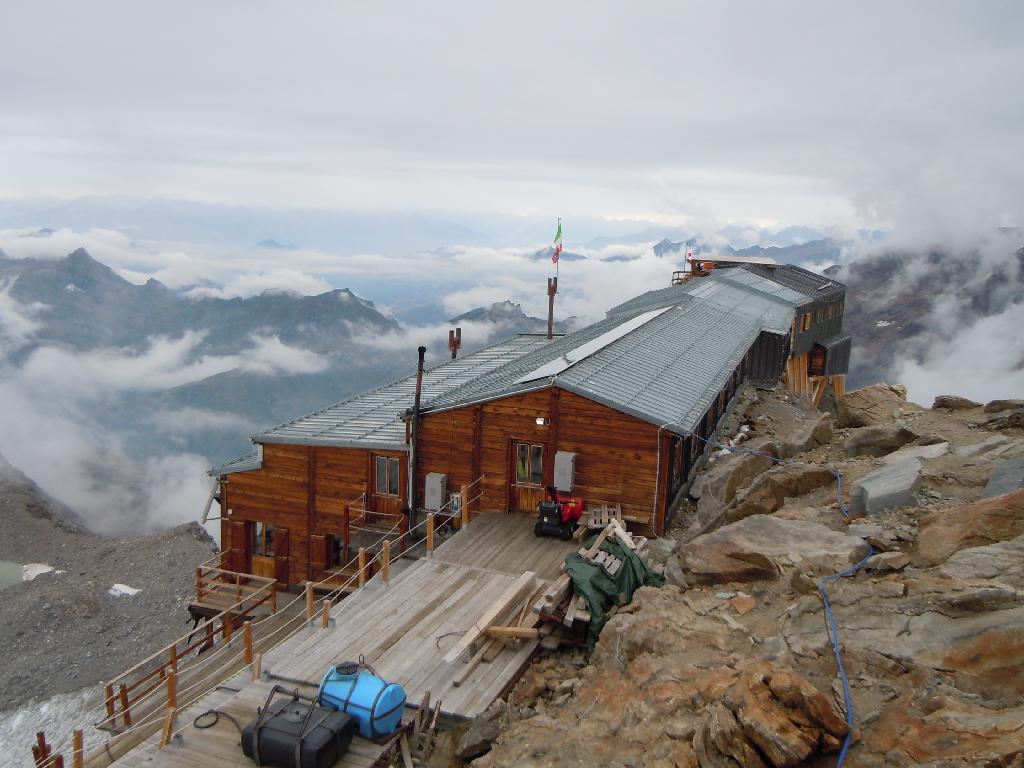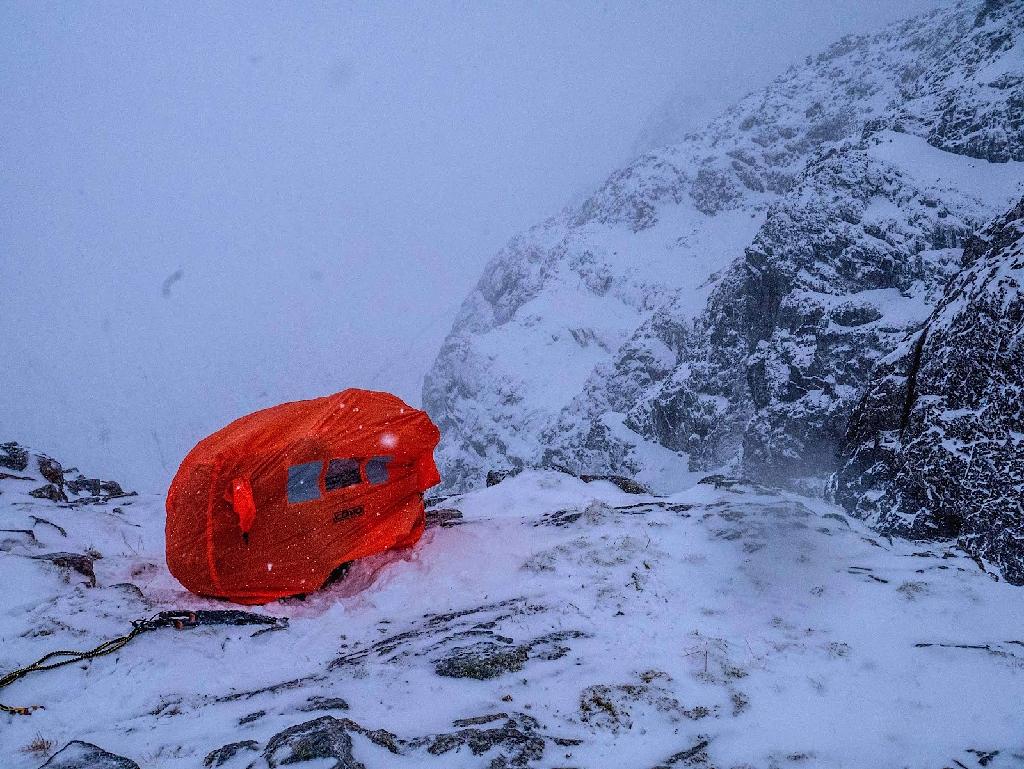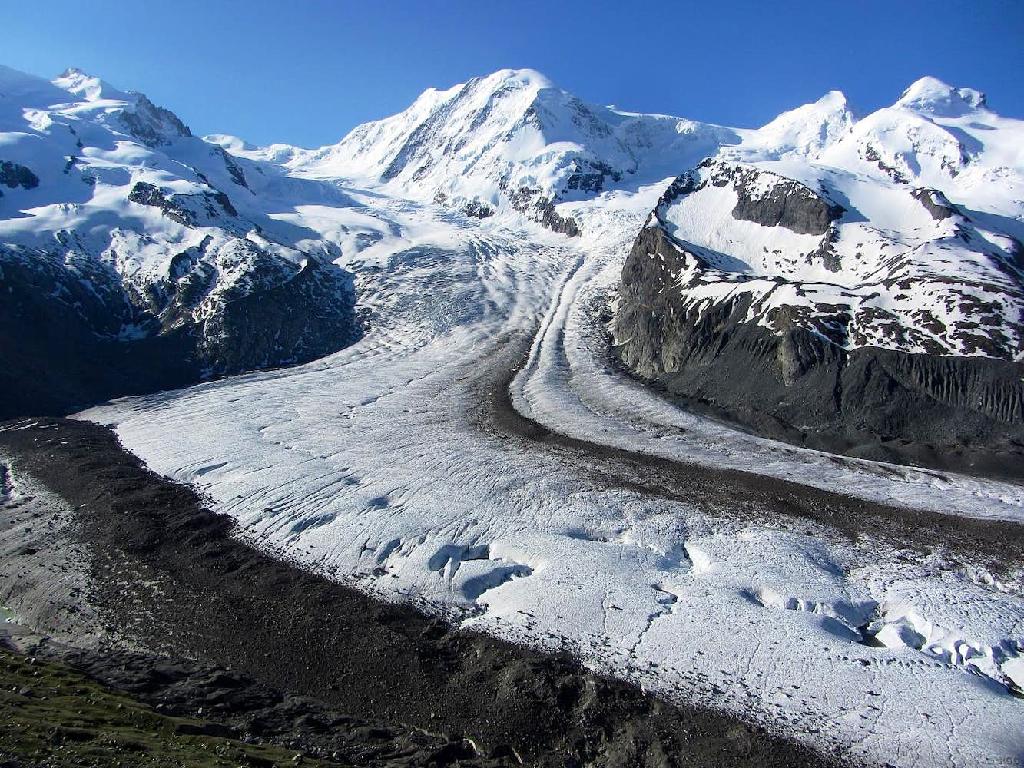We Decided To Press On...
Posted by Jeremy Windsor on May 12, 2023
In the latest edition of the Alpine Journal, UIAGM guide Rob Collister describes a "near miss" whilst ski touring in the Alps. Rob has very kindly granted me permission to reproduce it here...
Back in the day, when I was a pushy young alpinist but not yet a guide, Mike Esten asked me to be his deputy on a ski tour he was leading. My wife Netti, who had not been skiing very long, came along too for her first tour. To cut a long story short, six of us met up in the Gnifetti hut above Alagna on the south side of Monte Rosa whilst another three waited for us in Zermatt. Apart from a hurried, viewless visit of the Signalkuppe, the weather kept us frustratingly pinned down in the hut. With two weeks to play with, the plan was to ski over to Zermatt but twice we turned back having slogged all the way up to the Lisjoch. On our third attempt the weather was still poor when the alarm went off but when we surfaced for a late breakfast it was to clear skies and no wind. It seemed our luck had finally turned and we hastily packed up and set off. Tim started with us but then turned back, feeling unwell. He agreed to return to Alagna and bring the car round to Switzerland. Had he stayed with us, I would not be writing this today.
Three hours of hard graft, breaking trail in deep wind blown snow, brought us to the col. To our dismay there was cloud in the valley below and the wind was picking up again. But at least it would be behind us, we reasoned, and with luck the cloud might dissipate or sink down. I know now that cloud in the valley is a very bad sign unless it is in the still calm conditions of a temperature inversion. At the time, however, the idea of turning back yet again was not appealing and besides, our friends in Zermatt were waiting for us. We decided to press on.

Gnifetti Hut (3647m) provides good access to high level glacier travel for ski touring during late spring and early summer
Skiing down, we lost some height but all too son it became apparent that the cloud was rising to meet us. Approaching the first icefall, I was in front but the light was flat and I could see less and less. The Grentz glacier is notoriously crevassed and I became increasingly uneasy. It seemed best to turn back before we were commited. However, by the time we had put skins back on, it was already too late. The wind had become ferocious, blowing clouds of spindrift down the glacier, and it was soon obvious that making progress against it was no longer an option. We would have to stay where we were, in the open at 3900m.
Our first plan was to dig a trench, roofing it with skis and cutting bench seats to sit on inside but it quickly became clear that this was not going to work. We only had a couple of shovels in the party and spindrift filled any hole as fast as we du it. The wind had become so strong itwas hard to stand upright and Mike recalls being blown off his feet. In the end, we created a crude windbreak with our skis and sat on our rucksacks in a shallow scoop, our feet on the two ropes spread out as insulation. What saved our lives was the two-man Zdarsky sack I was carrying. I had long been sceptical of the orange poly bags that were de riguer at the time but it was many years before the advent of KISU's (Karrimor Instructor Survival Unit) or bothy bags. Although intended for two it was just big enough for the five of us to pull the yellow nylon bag over our heads and sit down in a tight circle.
There we stayed for the next 24 hours while the wind lashed the fabric and we eyed the stitching anxiously. Often, we had to shout to make ourselves heard. At one point, someone straightened a leg convulsively with cramp and a split appeared in the nylon. Fortunately, Mike and Robin were able to adjust positions to sit on it or we would have been finished. Condensation on the inside of the bag created a layer of ice that was shaken all over us in a perpetual cloud of ice particles, making everything damp. We were not seriously cold; body heat saw to that. But it was hideously uncomfortable and claustrophobic. Even so, nobody whinged and Mike and Netti kept us entertained with stories and limericks. Netti remembered all five of us wordlessly bellowing "Brindisi", the drinking song of La Traviata.

A modern update on the Zdarsky Sack. Rob describes his sack as, "basically an envelope open along one side with ventilation holes at each of the two inside corners. It could be pulled over the heads of two people (or five!) who could then sit on the ground tucking the surplus material under them ... The sack was in no way waterproof, being intended for cold conditions, but it was windproof which was the crucial factor. It certainly saved our lives!"
Our lunch food was soon eaten leaving only glucose tablets to pass around. Water in our bottles froze solid. It grew dark and, though we could not hear anything for the racket of wind and spindrift, frequent illumination of the tent made us aware that we were in the middle of a thunderstorm. The thought of our skis and ice axes became one more thing to ponder. Sometime in the dead of night, when morale was at its lowest ebb, Robin produced a fruitcake baked by his wife and for a few minutes we all cheered up.
not until noon next day was there any hint that wind might be dropping and the mist thinning. We began peering hopefully through the ventilation hole every few minutes until, suddenly, we were rewarded with a glimpse of the north face of Lyskamm 200m away and a patch of blue sky overhead. It was time to make a break for it but we were still stiff and cold and packing up took an age. As soon as we emerged from the bivvy sack our damp clothing froze solid so that we clunked around, like knights in armour; with frozen mits doing anything with our fingers was problematic. Hypothermia was not far away. The ropes were so embedded in the ice that we had to hack them out with axes, cutting one so badly that we abandoned it. Although we knew the glacier to be dangerous, the idea of tying knots in the wire-like rope we had left did not bear thinking about, let alone skiing roped.
Eventually we set off. I was in front, Mike bringing up the rear our route down the glacier clearly visible.I started to struggle with iced-up glasses and Robin led the way for a while as we crossed the glacier to the far side. We could see crevasses ahead and I took over again, carefully skirting around one band of holes and then traversing a steep moraine wall to avoid another. At the end of the traverse I fell over with a thump, releasing a small wind slab avalanche that knocked Netti off her feet, though without burying her.

The heavily crevassed Grenz glacier runs between the Dufourspitze on the left and Liskamm in the centre
Soon after, we reached a point of safety where we could regroup before skiing on down to the monte Rosa hut. By now, however, the weather was closing in again. Robin was agitated about the state of his toes and he skied off at once, withering discussion. Netti, shaken by the avalanche, also wanted to get off the mountain as fast as possible. I was conflicted as there was no sign of Mike and John but the mist was about to envelop us and I was worried about finding the hut. We waited impatiently for several minutes and then set off, assuming they would not be far behind. In the event we reached the hut without difficulty following Robin's track. Robin said later that he was guided to it by the smell of goulash cooking. But half an hour later, when we had wearily taken off our boots and outer garments and entered the cosy warms of the living room, we realised that the others had still not arrived. I was beratied by the guardian for not keeping the party together and I was just setting off back up the hill when, to our relie, they appeared. It transpired that John had cut a corner and fallen three metres into a crevasse, luckily landing on a snow bridge. Although he managed to climb out unaided it had all taken a long time.
Next day, Robin was flown out to hospital by helicopter and eventually made a full recovery. The rest of us skied without further mishap down to Zermatt where we learned that the storm had claimed the lives of 32 people across the Alps.
There are many lessons to be learnt from this epic but the most important has to be the value of carrying a group shelter. I am pleased to say it is now a standard piece of kit for British leaders at all levels from summer ML to IFMGA guides. The same is not true on the Continent. When seven people died on the Pigne d'Arolla three years ago, caught in a storm only 500m from the Vignette hut, they were found lying in the open with no shelter whatsoever. I rest my case.
Thanks Rob. Thanks also to Ed Douglas, editor of the Alpine Journal, for publishing such a brilliant journal!
Thanks for reading this post. If this is your thing why don't you take a look at other posts on the blog? Better still, why not join the British Mountain Medicine Society? More information can be found here
For more information about the University of Central Lancashire's Diploma in Mountain Medicine (DiMM) take a look at this.
Comments
Leave a comment.



 )
)